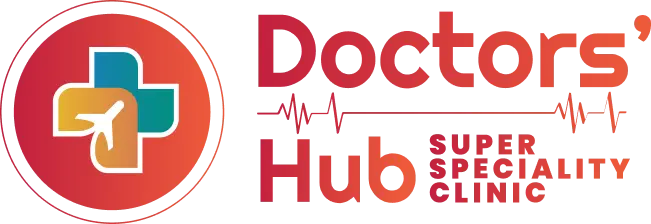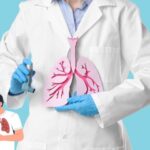Chest physiotherapy (CPT) helps lung function through several techniques to clear mucus from the lungs. CPT benefits people whose normal mucus clearance is blocked due to COPD cystic fibrosis or bronchiectasis. Through successful mucus removal techniques CPT stops infections and boosts both breathing quality and respiratory performance.
Key Techniques in Chest Physiotherapy
Chest physiotherapy comprises several techniques, each address specific respiratory challenges:
1. Postural Drainage: Utilizing Gravity to Clear Lung Secretions
The patient’s position helps with lung drainage because it moves mucus down through the different lung segments toward the main airways and eases its removal. The patient needs to switch positions between different positions that target different parts of the lungs during this treatment.

They lie face down with proper support for the posterior segments of the lung upper lobe drainage while flat on their back, which remains best for anterior drainage treatment. Postural drainage produces better results when doctors apply percussion and vibration techniques to their CPT treatment plan
2. Chest Percussion: Loosening Mucus Through Rhythmic Clapping
You create vibrations against the chest wall with cupped hands during Chest Percussion to help mucus flow better off the bronchial walls. Chest percussion helps mucus move from smaller airway passages to the larger channels where it becomes easier to cough up.
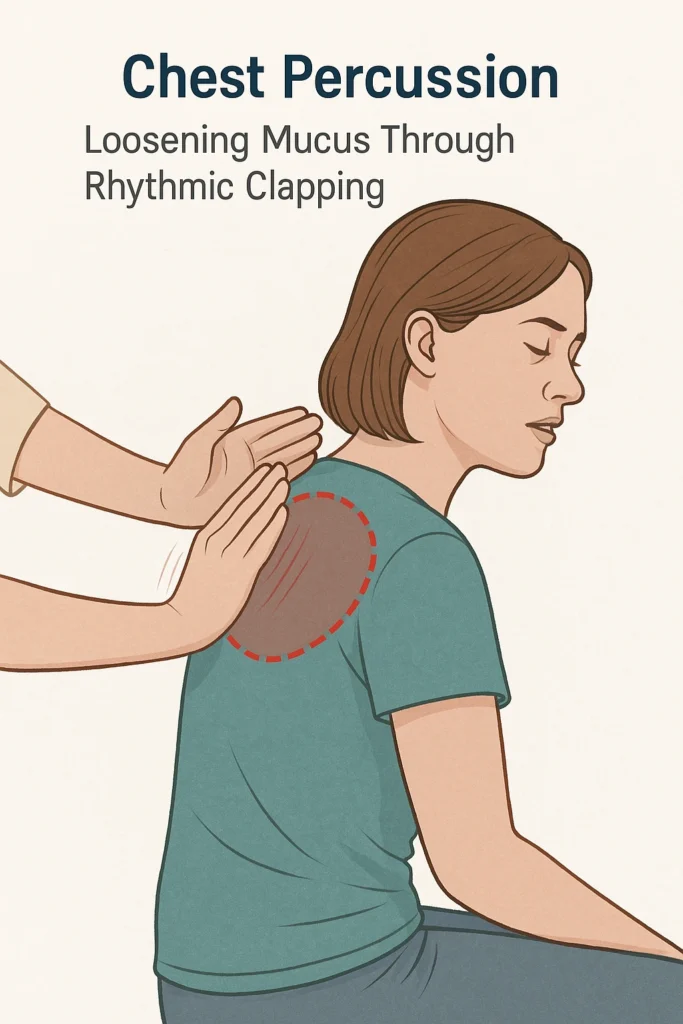
Apply your chest percussion to the right lung areas without hitting the spine or sternum bones to keep patients safe and comfortable.
3. Vibration: Enhancing Mucus Clearance with Gentle Oscillations
The exhalation part of breathing gets a gentle back-and-forth motion on the chest wall through vibration methods. A gentle hand motion makes small airway vibrations that move mucus away from the walls to the central passageways for easier coughing up.
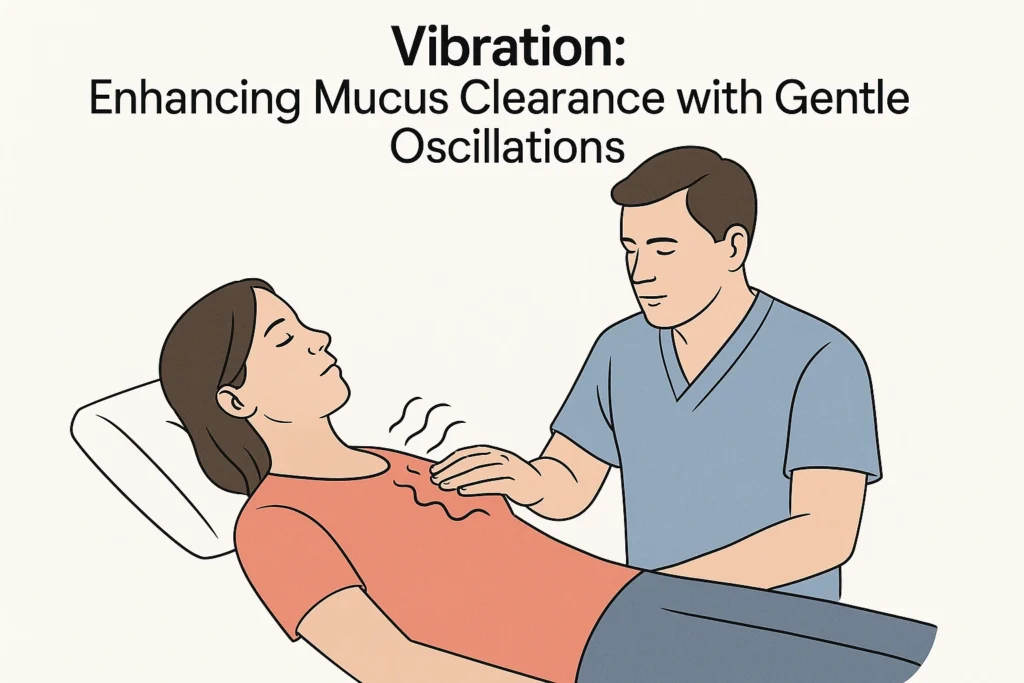
The pulmonologist in Dwarka or physiotherapist in Gurgaon performs vibration therapy after percussion by placing flat hands on the chest while shaking gently with the patient’s breathing rhythm.
4. Controlled Coughing: Expelling Mobilized Secretions
You can control your cough to remove mucus that has moved forward in your airways. Patients need to inhale deeply before taking soft gasping coughs to remove loosened mucus from their airways after receiving drainage, percussion, and vibration treatment.
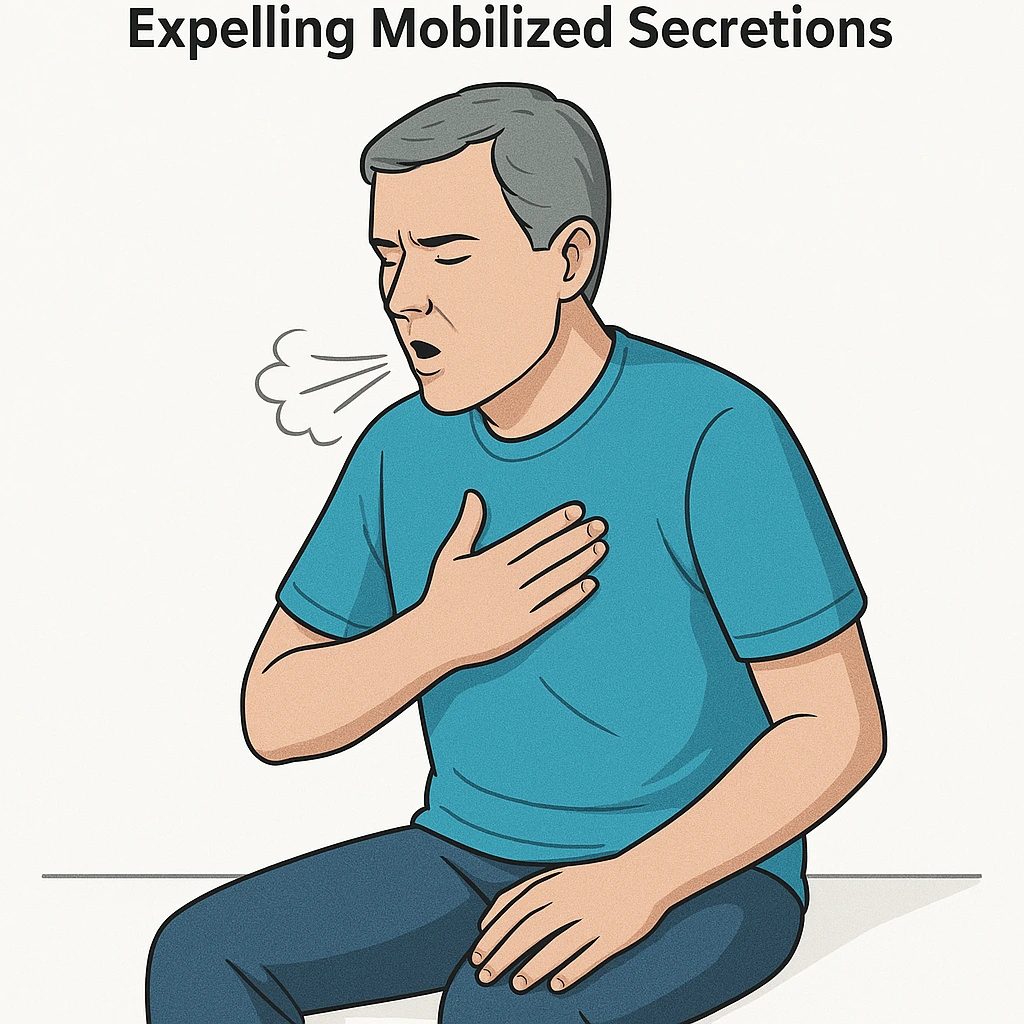
By following this method, the respiratory system can remove the mobilized secretions and prevent infections while making breathing easier.
Step-by-Step Guide to Performing Chest Physiotherapy
Implementing chest physiotherapy involves a series of coordinated steps to maximize its effectiveness:
- Assessment and Preparation:
- Consult with a physiotherapist in Dwarka or chest doctor in Gurgaon to determine the necessity and suitability of CPT based on the patient’s condition.
- Educate the patient about the procedure, its benefits, and what to expect during the session.
- Ensure the patient is wearing comfortable clothing and is in a relaxed state.
- Consult with a physiotherapist in Dwarka or chest doctor in Gurgaon to determine the necessity and suitability of CPT based on the patient’s condition.
- Positioning for Postural Drainage:
- Position the patient to target specific lung segments, utilizing gravity to assist in mucus drainage.
- Use pillows and supports to maintain the required positions comfortably.
- Each position is typically maintained for 5 to 7 minutes.
- Position the patient to target specific lung segments, utilizing gravity to assist in mucus drainage.
- Application of Percussion:
- With the patient in the appropriate drainage position, perform rhythmic clapping over the targeted lung area using cupped hands.
- Continue percussion for 5 to 7 minutes per area, ensuring the patient remains comfortable throughout.
- With the patient in the appropriate drainage position, perform rhythmic clapping over the targeted lung area using cupped hands.
- Application of Vibration:
- Following percussion, apply gentle vibrating pressure to the same area during the patient’s exhalation phase.
- Repeat this process for several breaths to enhance mucus mobilization.
- Following percussion, apply gentle vibrating pressure to the same area during the patient’s exhalation phase.
- Encouraging Controlled Coughing:
- After completing the above techniques, instruct the patient to take a deep breath and perform a series of controlled coughs to expel the loosened mucus.
- Provide tissues or a receptacle for the expectorated secretions.
- After completing the above techniques, instruct the patient to take a deep breath and perform a series of controlled coughs to expel the loosened mucus.
- Monitoring and Aftercare:
- Observe the patient for any adverse reactions, such as dizziness or discomfort.
- Offer the patient water to rinse their mouth and ensure they are comfortable before concluding the session.
- Observe the patient for any adverse reactions, such as dizziness or discomfort.
Indications and Contraindications for Chest Physiotherapy
Indications: When Is Chest Physiotherapy Recommended?
Chest physiotherapy is beneficial for patients experiencing:
- Excessive pulmonary secretions due to conditions like cystic fibrosis, COPD, or bronchiectasis.
- Atelectasis caused by mucus obstruction.
- Neuromuscular disorders that impair effective coughing and mucus clearance.
Contraindications: When Should Chest Physiotherapy Be Avoided?
CPT may be contraindicated in situations such as:
- Severe osteoporosis, where percussion could risk fractures.
- Recent spinal injuries or surgeries.
- Active pulmonary hemorrhage or significant hemoptysis.
Common Types of Chest Physiotherapy and Their Clinical Uses
Understanding the different types of chest physiotherapy helps in selecting the right approach for each patient. Every method serves a unique purpose based on the patient’s respiratory condition and treatment goals.
Manual Chest Physiotherapy
This involves hands-on techniques such as percussion, vibration, and manual assisted coughing. It is widely used in hospitals and physiotherapy clinics in Gurgaon and Dwarka, especially for patients who need personalized care or cannot tolerate mechanical methods.
Mechanical Chest Physiotherapy
This method uses devices like high-frequency chest wall oscillation (HFCWO) vests or mechanical percussors. These devices generate vibrations to mobilize mucus and are suitable for patients who require regular and consistent therapy, especially those with chronic conditions like cystic fibrosis.
Incentive Spirometry
This involves breathing exercises using a device that encourages deep breathing. It helps re-expand collapsed lung segments and improves lung capacity after surgery or prolonged immobility.
Key Positions in Chest Physiotherapy for Maximum Effectiveness
Correct body positioning is critical to the success of postural drainage. Each position targets a specific segment of the lung.
- Supine Position: Helps drain the front part of the upper lobes.
- Prone Position: Used for draining posterior segments.
- Side-Lying Position: Effective for draining the lateral segments of the lower lobes.
- Head-Down Position (Trendelenburg): Recommended for basal segments but should be used with caution, especially in patients with high blood pressure or neurological conditions.
Physiotherapy clinics in Gurgaon often combine these positions with vibration and controlled breathing to better results
Who Can Benefit from Chest Physiotherapy in Gurgaon
Patients with the following conditions are usually advised to undergo chest physiotherapy at a physiotherapy clinic near them:
- Chronic bronchitis
- Cystic fibrosis
- Pneumonia with retained secretions
- Post-operative lung collapse
- Neurological conditions with impaired cough reflex
If you’re seeking chest physiotherapy in Dwarka or Gurgaon, always consult a pulmonologist or expert physiotherapist who understands cough related complications and can prescribes the right technique.
Risks and Safety Measures in Chest Physiotherapy
Chest physiotherapy is generally safe but certain precautions are essential:
- Avoid percussing over bony prominences or surgical wounds.
- Monitor patients with cardiac issues carefully, especially in head-down positions.
- Discontinue therapy if the patient feels dizzy, nauseated, or has chest pain.
Always perform the procedure in a controlled clinical setting, like a certified physiotherapy clinic in Gurgaon or Dwarka, to ensure maximum safety.
Benefits of Chest Physiotherapy in Long-Term Recovery
Regular chest physiotherapy helps:
- Improve oxygen levels
- Prevent lung infections
- Reduce hospital stays
- Improve life in chronic lung diseases
When done consistently, these techniques help patients breathe easier and recover faster, especially after surgeries or prolonged illness.
Why Choose My Doctors Hub for Chest Physiotherapy in Gurgaon
My Doctors Hub in Gurgaon provides excellent chest physiotherapy services under qualified doctors. The team applies tested treatment methods while using patient-specific care plans and safe procedures. You can improve your breathing and get better health management from the team, whether dealing with a chest condition or pneumonia recovery
We provide chest physiotherapy service to both Gurgaon and Dwarka, patients while making each session risk-free and customized to achieve better results
Doctors in Delhi NCR use scientific methods and proper procedures to help patients improve lung function. Specific actions in chest physiotherapy support lung health by first draining postural mucus and then vibrating the chest area to keep the lungs clean.
Finding a good local physiotherapy clinic creates a huge difference while treating short-term or ongoing health problems. Work only with pulmonology experts who know your health needs and treat you according to your requirements.
My Doctors Hub provides medical & healthcare services to patients in both Gurgaon and Dwarka. Expert help and latest methods allow you to find permanent and safe ways to control your pain.
Frequently Asked Questions (FAQs)
Chest physiotherapy is not painful, though some patients may find percussion slightly uncomfortable at first. A trained physiotherapist in Delhi always make sure technique is applied gently and safely
Some parts, like postural drainage or incentive spirometry, can be done at home. However, it is advised to do it under supervision at a physiotherapy clinic in Gurgaon or Delhi NCR, especially if you have other health issues
Coughing is actually a desired outcome. It means the mucus has loosened and is moving out of the lungs.









